#indian space research organization
Text
Chandrayaan-3 अपडेट: ISRO ने घोषणा की, प्रज्ञान रोवर अब 'नींद मोड' में है, और 22 सितंबर को फिर सक्रिय हो सकता है!
Image Credit: ISRO
Chandrayaan-3: चंद्रमा पर Pragyan रोवर ‘नींद मोड’ में, 22 सितंबर को फिर सक्रिय हो सकता है। ISRO के नवाचार से जुड़ें!
भारतीय अंतरिक्ष और अनुसंधान संगठन (ISRO) ने घोषणा की है कि 22 सितंबर 2023 को, विक्रम लैंडर के प्रज्ञान रोवर मॉड्यूल सुनी हवाओं में ‘नींद मोड’ में प्रवेश करेगा। रोवर ने अपने कार्यों को पूरा किया है और अब सुरक्षित रूप से पार्क किया गया है, साथ ही APXS और LIBS…
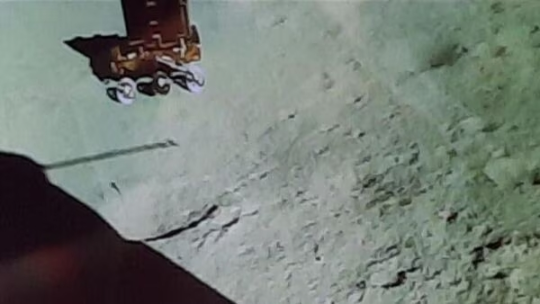
View On WordPress
#Chandrayaan-3#Chandrayaan-3 News#Indian Space Research Organization#isro#Lunar Mission Update#Lunar Surface#Moon Mission#Pragyan Rover#Sleep Mode#Space Exploration
1 note
·
View note
Text
The amazing camera aboard ISRO's Chandrayaan-3 that took this amazing moon photo
The Chandrayaan-3 mission, ISRO’s remarkable unmanned lunar endeavour, has gifted us with mesmerising visuals of both the Moon and Earth, enhancing our understanding of these celestial bodies.
Intricate Details Revealed
This awe-inspiring photograph, showcasing intricate lunar craters in great detail, was masterfully taken upon the spacecraft’s entrance into the Moon’s orbit on August 5th. This…

View On WordPress
#celestial photography#Chandrayaan-3#Chandrayaan-3 camera#Chandrayaan-3 instruments#Chandrayaan-3 isro#Chandrayaan-3 moon#chandrayaan-3 spacecraft#India moon mission#Indian Space Research Organization#ISRO#ISRO moon#lunar mission#moon Chandrayaan-3#unmanned lunar mission
0 notes
Text
இந்திய விண்வெளி ஆராய்ச்சி நிறுவனத்தின் பின் வரும் பணிகள் நிரப்புவதற்கான அறிவிப்பு வெளியாகியுள்ளன
இந்திய விண்வெளி ஆராய்ச்சி நிறுவனத்தின் பின் வரும் பணிகள் நிரப்புவதற்கான அறிவிப்பு வெளியாகியுள்ளன
#govtjobs #upsc #ssc #currentaffairs #gk #ssccgl #ias #jobs #governmentjobs
இந்திய விண்வெளி ஆராய்ச்சி நிறுவனத்தின் பின் வரும் Assistant (Rajbhasha) பணிகள் நிரப்புவதற்கான அறிவிப்பு வெளியாகியுள்ளன. மத்திய அரசு இந்த அதிகாரப்பூர்வ அறிவிப்பினை வெளியிட்டுள்ளது. இந்திய விண்வெளி ஆராய்ச்சி நிறுவனத்தின் பணிக்கு விண்ணப்பிக்க ஆர்வமுள்ளவர்கள் 08/12/2022 முதல் 28/12/2022க்குல் என்ற இனையத்தில் மூலமாக ஆன்லைன் மூலமாக விண்ணப்பிக்கவும். இப்பணிக்கு விண்ணப்பிக்கும் நபர்கள் விண்ணப்பிக்கும்…

View On WordPress
#india space research organisation#india space research organization#indian research and space organisation#indian space agency#indian space research organisation#indian space research organisation (isro)#indian space research organisation explained#indian space research organisation news#indian space research organisation news today#indian space research organisation upsc#indian space research organization#indian space research organization (isro)#ISRO Recruitment 2022 07 Assistant (Rajbhasha) Posts#space research
0 notes
Text
Space Technology Opportunity in India

Written By: Jagriti Shahi
Introduction:
Entrepreneurship in space technology in India has been gaining momentum in recent years. The Indian government has been actively promoting the development of the space sector, and private companies are playing an increasingly important role.

As the nation liberalizes its space sector, a diverse array of players are contributing to the burgeoning space ecosystem. Entrepreneurs are venturing into satellite manufacturing, pushing the boundaries of launch services, delving into space exploration, and exploring innovative solutions for satellite-based communication. The landscape is further enriched by collaborative efforts between private entities, government agencies, and academic institutions, fostering a dynamic environment for research and development.
In this context, it's crucial to explore the challenges and opportunities that define the entrepreneurial spirit in India's space technology sector. Regulatory hurdles, infrastructure development, and the need for sustained investments are among the challenges that entrepreneurs face. However, with increasing investor interest, a robust policy framework, and a commitment to fostering innovation, India's entrepreneurial ventures in space technology are poised to shape the nation's narrative in the cosmic domain. This dynamic interplay of public and private entities is not only propelling India's space capabilities but is also contributing to the global discourse on the commercialization and exploration of space.
Here are some key aspects of entrepreneurship in space technology in India:
Government Initiatives:New Space Policy: The Indian government has introduced policies to encourage private sector participation in space activities. The New Space India Limited (NSIL) was established to promote, commercially exploit, and transfer technologies developed by the Indian Space Research Organisation (ISRO).Liberalization: The government has liberalized the space sector, allowing private companies to undertake a wide range of space-related activities, including satellite launches, space exploration, and satellite communication services. (ISRO) Initiatives: Antrix Corporation: Antrix is the commercial arm of ISRO, and it collaborates with private players for the commercialization of space-related products and services.: SEED is a program initiated by ISRO to promote startups in the space sector by providing them with opportunities for collaboration and technology transfer.: NSIL is a central public sector enterprise (CPSE) under the Department of Space. It plays a crucial role in commercializing space products, technical consultancy services, and transfer of technologies.: ISRO has been actively engaging with startups, providing them access to its facilities, expertise, and technology.: The Department of Space in India oversees the country's space program. It may introduce schemes and programs to support space technology startups and entrepreneurs. (AIM): AIM, a flagship initiative of the NITI Aayog, supports innovation and entrepreneurship in various sectors. It may have programs and funding opportunities that space technology startups can explore. (NIF): NIF supports grassroots innovations and may provide support to startups working on innovative space technologies.
Private Space Companies:Startups: Several startups in India are focusing on various aspects of space technology. Some are involved in satellite manufacturing, launch services, data analytics from space, and more.Launch Services: Companies like Agnikul Cosmos, Skyroot Aerospace, and Pixxel are working on developing small satellite launch vehicles to provide cost-effective and flexible launch options.
Space Exploration and Research: Interplanetary Missions: ISRO has been actively involved in space exploration, and private companies are expressing interest in participating in future interplanetary missions.Research and Development: Private entities are engaging in research and development activities, contributing to advancements in satellite technology, propulsion systems, and other space-related technologies.
Satellite Manufacturing:Private Satellite Manufacturers: Companies like Exseed Space and Bellatrix Aerospace are involved in the manufacturing of satellites, catering to various purposes such as communication, Earth observation, and scientific research.
Communication Services:Telecommunication Satellites: Private companies are exploring opportunities to provide satellite-based communication services. This includes both broadband internet services and other communication solutions.
Funding and Investments:Investor Interest: The space technology sector in India has attracted attention from investors. Funding rounds for space startups have been on the rise, indicating confidence in the potential growth of the industry.
Collaborations and Partnerships:
Industry-Academia Collaboration: Partnerships between private companies, government organizations, and academic institutions are fostering innovation and research in the space sector.
The Indian space technology ecosystem is evolving, and with continued government support, entrepreneurial ventures in space technology are expected to play a crucial role in shaping the future of the Indian space industry.

The number of space tech startups in India has witnessed explosive growth, increasing by almost five times in just five years. Investments in the sector have also seen a sharp rise, from $17 million in 2019 to an estimated $124.7 million in 2023.
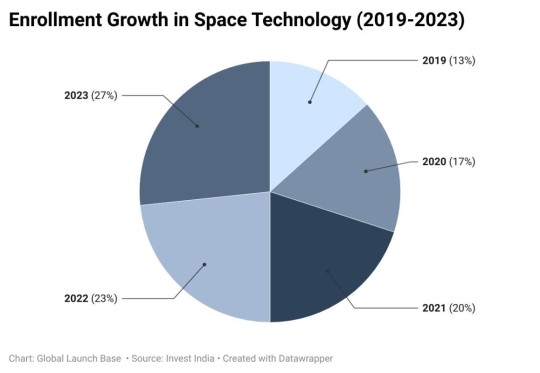
Commercialization of Space Activities: With India's proven track record in satellite launches and space technology, there is a substantial potential for the commercialization of space activities. The burgeoning demand for satellite-based services, including communication, arth observation, and navigation, opens up opportunities for private entities to actively participate in the space industry. As the cost of space access continues to decrease, private companies can explore ventures such as satellite manufacturing, space tourism, and satellite-based applications, contributing to economic growth and job creation.
International Collaborations: Collaborations with other space-faring nations present a promising avenue for India to augment its space capabilities. Joint ventures, knowledge exchange, and technology transfer can accelerate innovation and enhance the efficiency of space missions. ISRO has already established itself as a reliable partner for international launches, and expanding collaborative efforts can lead to shared resources, reduced costs, and a more diversified approach to space exploration. As India continues to engage in global partnerships, it can leverage collective expertise for ambitious endeavors beyond Earth's orbit.
Innovation in Space Technology: Investments in research and development (R&D) can catapult India into the forefront of space innovation. Emphasis on cutting-edge technologies such as artificial intelligence, advanced materials, and propulsion systems can revolutionize space missions. The development of reusable launch vehicles, like the ongoing efforts in creating a Reusable Launch Vehicle (RLV), can significantly reduce launch costs, making space exploration more sustainable. Encouraging a culture of innovation, fostering collaboration between academia and industry, and providing incentives for R&D initiatives can fuel breakthroughs in space technology.
Space Applications for Sustainable Development: Leveraging space technology for sustainable development on Earth is an untapped frontier. Utilizing satellite data for precision agriculture, disaster management, environmental monitoring, and resource mapping can contribute to addressing pressing global challenges. By integrating space-based solutions into sectors such as agriculture, healthcare, and urban planning, India can harness the power of space technology for inclusive and sustainable development, bringing tangible benefits to its citizens and contributing to global initiatives.
Expansion of Interplanetary Exploration: Building on the success of Mars Orbiter Mission (Mangalyaan), India has the potential to expand its interplanetary exploration efforts. Initiatives for exploring other celestial bodies, such as Venus or asteroids, can contribute to humanity's understanding of the solar system and beyond. A strategic focus on ambitious interplanetary missions can position India as a key player in the broader scientific community and foster international collaboration in the exploration of the cosmos.
Trending Technologies in India's Space Industry:
Nanotechnology: The integration of nanotechnology in space technology has the potential to revolutionize spacecraft design, materials, and instrumentation. Nanosatellites, with their miniaturized components, are becoming increasingly popular for cost-effective and innovative space missions. India can leverage nanotechnology for lightweight yet robust spacecraft, enhancing mission efficiency and scientific capabilities.
Companies: Nano-Tech SpA, Kalva Nanotech
Artificial Intelligence (AI) and Machine Learning (ML): AI and ML are playing a pivotal role in data analysis, image processing, and autonomous decision-making in space missions. India can explore AI applications for real-time data interpretation, automated navigation, and predictive maintenance of spacecraft. Incorporating machine learning algorithms into Earth observation data analysis can significantly enhance the understanding of environmental changes.
Companies: Aadyah Aerospace, Blue Sky Analytics
Quantum Computing: Quantum computing holds the promise of solving complex computational problems beyond the capabilities of classical computers. In the space sector, quantum computing can be utilized for optimizing mission trajectories, simulating quantum systems, and enhancing the security of communication channels. India's focus on quantum computing research can contribute to advancements in space-related computations.
Companies: QpiAI, BosonQ
3D Printing/Additive Manufacturing: The adoption of 3D printing in space technology can revolutionize the manufacturing process, enabling the production of complex and lightweight structures. India can benefit from 3D printing for rapid prototyping, cost-effective manufacturing of satellite components, and even on-demand production during long-duration space missions.
Companies: Agnikul Cosmos, EOS India
Blockchain Technology: Blockchain technology offers secure and transparent data management, making it applicable to space-based applications such as satellite communication, data storage, and secure information sharing. By incorporating blockchain, India can enhance the security and integrity of space-related data and transactions.
Companies: SpaceTime Labs, Aryaka Networks
Solar Sail Technology: Solar sails, propelled by the pressure of sunlight, offer a sustainable and efficient means of propulsion for spacecraft. This technology can be harnessed for deep-space exploration, enabling missions to travel vast distances with minimal fuel requirements. India's exploration programs can benefit from research and development in solar sail technology for extended-duration missions.
Companies: Indian Institute of Space Science and Technology (IIST), IIT Bombay - Aerospace Engineering Department
Hyperspectral Imaging: Hyperspectral imaging involves capturing a wide range of wavelengths in the electromagnetic spectrum. This technology is instrumental in Earth observation, resource mapping, and environmental monitoring. India can explore the integration of hyperspectral imaging in its satellite payloads for enhanced remote sensing capabilities.
Companies: Pixxel, Paras Defence & Space Technologies Ltd
Internet of Things (IoT) for Space: The application of IoT in space technology involves connecting devices and sensors on satellites and spacecraft to gather and transmit data. This interconnected network can facilitate efficient communication, data collection, and collaborative decision-making during space missions. India can explore IoT applications for enhanced space situational awareness and mission coordination.
Companies: Agnikul Cosmos
As India looks to the future, embracing these trending technologies will be crucial for maintaining its competitive edge in space exploration and satellite technology. By actively incorporating these innovations into its space programs, India can not only enhance mission success but also contribute to the global advancement of space technology. Collaborations with research institutions, startups, and the private sector will play a vital role in driving these technological advancements in India's space industry.
Challenges and the Way Forward:
Despite its successes, India's space program faces challenges such as increased competition, budget constraints, and the need for continuous innovation. To overcome these challenges, sustained government support, collaboration with private entities, and a focus on skill development in the space sector are crucial.
Increased Global Competition: The space industry is becoming increasingly competitive with the emergence of new players and the commercialization of space activities. To stay ahead, India must continuously innovate, streamline its processes, and invest in cutting-edge technologies. Developing a robust ecosystem for space startups and fostering public-private partnerships can enhance India's competitiveness in the global space market.
Budget Constraints: Despite commendable achievements, budget constraints pose a challenge for sustaining and expanding India's space endeavors. A consistent and increased allocation of funds to ISRO, along with exploring innovative funding mechanisms, will be crucial. Engaging with the private sector for joint ventures and commercial space activities can help alleviate financial constraints and promote economic sustainability in the long run.
Human Resource Development: The growth of India's space program necessitates a skilled workforce capable of handling complex missions. Investing in education and training programs in collaboration with academic institutions can ensure a steady supply of skilled professionals in fields such as aerospace engineering, astrophysics, and data sciences. This will not only address the current workforce requirements but also fuel future innovations in space technology.
Technological Advancements: Rapid technological advancements globally require India to stay at the forefront of innovation. Embracing emerging technologies such as artificial intelligence, quantum computing, and advanced propulsion systems will be essential. Establishing research and development centers dedicated to space technology innovation can facilitate the integration of these advancements into future missions.
Space Debris Management: The increasing number of satellites and space missions contribute to the growing issue of space debris. India needs to actively participate in international efforts to address space debris management, adopting sustainable practices in satellite design and end-of-life disposal. Research into debris removal technologies and international collaboration on space traffic management will be pivotal in ensuring the long-term sustainability of space activities.
Climate Change Monitoring: With the rising global concerns about climate change, space technology plays a crucial role in monitoring environmental indicators. India can take a leadership role in developing satellite-based solutions for climate monitoring, disaster response, and sustainable resource management. This requires a dedicated focus on Earth observation satellites, advanced sensors, and data analytics.
Enhanced Space Diplomacy: Strengthening space diplomacy is essential for India to expand its global influence in the space arena. Engaging in collaborative space missions, sharing scientific knowledge, and participating in international forums will enhance India's standing as a responsible space-faring nation. Forming strategic partnerships with countries interested in space exploration can open up new avenues for cooperation and joint missions.
Conclusion:
India's journey in space technology has been nothing short of remarkable, with ISRO consistently pushing the boundaries of innovation. As the nation continues to invest in space exploration, the opportunities for growth, collaboration, and technological advancements are boundless. The future holds exciting possibilities for India's space technology sector, positioning the country as a key player in the global space community.
About Global Launch Base:
Global Launch Base helps international startups expand in India. Our services include market research, validation through surveys, developing a network, building partnerships, fundraising, and strategy revenue growth. Get in touch to learn more about us.
Contact Info:
Website: www.globallaunchbase.com
LinkedIn: https://www.linkedin.com/company/globallaunchbase/
Email: [email protected]
#ISRO - Indian Space Research Organization#NewSpace India Limited (NSIL)#SEED(Social Entrepreneurship Empowerment Development)#Atal Innovation Mission Official#National Innovation Foundation - India#Nano-Tech SpA#Kalva Nanotech#AADYAH Aerospace Private Limited#Blue Sky Analytics#QpiAI#BosonQ Psi (BQP)#AgniKul Cosmos#EOS#Spacetime Labs#Aryaka#Indian Institute of Space Science and Technology#Aerospace Engineering Association IIT Bombay#Pixxel#Paras Defence & Space Technologies Ltd.#AgniKul Cosmos hashtag#SpaceTechnologyInIndia hashtag#IndianSpaceProgram hashtag#ISROOpportunities hashtag#SpaceIndustryGrowthIndia hashtag#SpaceResearchOrganizationsIndia hashtag#SatelliteTechnologyOpportunities hashtag#IndianSpaceExploration hashtag#ISROAchievements hashtag#SpaceScienceCareersIndia hashtag#SpaceTechnologyTrends hashtag
0 notes
Text
Aditya L1 Mission - क्यों है एक वरदान
भारत नें Chandrayaan-3 के बाद कल Aditya L1 Mission से सूर्य को नमन की तैयारी है। भारत की स्पेस एजेंसी ISRO के प्रमुख S. Somanath ने कहा कि भारत का यह पहला सौर Mission सूर्य और पृथ्वी के बीच मौजूद L1 Point पर पहुंचने के लिए 125 दिन लेगा। यह Point अपनी धरती से 15 Lakh Kilometer की दूरी पर है। यह धरती से सूरज की दूरी का मात्र 1% है।
Aditya L1 Mission के लिए क्यों खास है L1 Point?
किसी भी ग्रह की…

View On WordPress
#Aditya L1#Aditya L1 mission#Aditya L1 satellite#Astronomical research#Heliosphere#Indian Space Research Organization (ISRO)#ISRO#ISRO missions#Solar missions#Solar Orbiter#Solar research#Solar science#Solar system exploration#Space exploration#Space missions#Space probes#Space science#Space technology#Sun observation#Sun&039;s atmosphere#Sun&039;s corona
0 notes
Text

#Chandrayaan-3#the third lunar mission of the Indian Space Research Organization (ISRO)#made a soft landing on the Moon.#World victorious tricolor dear#now the moon is ours🚀🇮🇳#India became the first country in the world to successfully reach the south polar region of the Moon. The landing of Chandrayaan-3 created#today is a proud day for India.#This historic and proud achievement is a symbol of determination#hard work and sacrifice of our scientists.#Congratulations to the countrymen and the entire ISRO team associated with Chandrayaan-3 and best wishes for the future.#ISRO#Chandrayaan3#Chandrayaan3Landing#VikramLander#दीनबंधुसरछोटूरामधाम#JatSewaSangh
1 note
·
View note
Text
ISRO Recruitment 2023
ISRO Recruitment 2023 : इंडियन स्पेस रिसर्च ऑर्गेनाइजेशन (इसरो) ने 526 पदों पर नई भर्ती का नोटिफिकेशन जरी किया है l इसरो भर्ती 2023 के लिए ऑनलाइन आवेदन 20 दिसंबर 2022 से 9 जनवरी 2023 तक कर सकते है और आवेदन शुक्ल जमा करवाने की अंतिम तिथि 11 जनवरी 2023 तक रखी गई है l
इसरो भर्ती 2023 के तहत असिस्टेंट, जूनियर पर्सनल असिस्टेंट, अप्पर डिवीज़न क्लर्क, स्टेनोग्राफर, पर्सनल असिस्टेंट सहित कई पदों पर भर्ती…
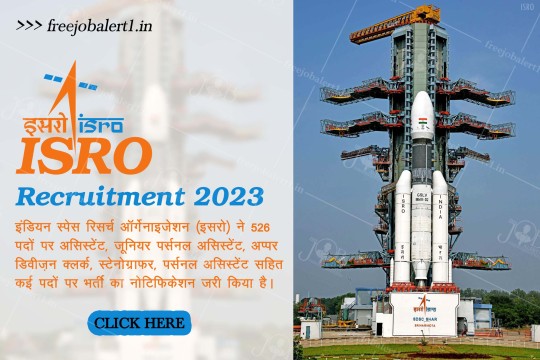
View On WordPress
#Indian Space Research Organization 2023#Indian Space Research Organization Recruitment 2023#Indian Space Research Organization Vacancy 2023#ISRO Recruitment 2023#ISRO Vacancy 2023#इंडियन स्पेस रिसर्च ऑर्गेनाइजेशन भर्ती 2023#इसरो भर्ती 2023
0 notes
Text
IS THE MOON RUSTING??
Blog#309
Wednesday, June 28th, 2023
Welcome back,
While our Moon is airless, research indicates the presence of hematite, a form of rust that normally requires oxygen and water. That has scientists puzzled.
Mars has long been known for its rust. Iron on its surface, combined with water and oxygen from the ancient past, give the Red Planet its hue. But scientists were recently surprised to find evidence that our airless Moon has rust on it as well.

A new paper in Science Advances reviews data from the Indian Space Research Organization's Chandrayaan-1 orbiter, which discovered water ice and mapped out a variety of minerals while surveying the Moon's surface in 2008. Lead author Shuai Li of the University of Hawaii has studied that water extensively in data from Chandrayaan-1's Moon Mineralogy Mapper instrument, or M3, which was built by NASA's Jet Propulsion Laboratory in Southern California. Water interacts with rock to produce a diversity of minerals, and M3 detected spectra - or light reflected off surfaces - that revealed the Moon's poles had a very different composition than the rest of it.
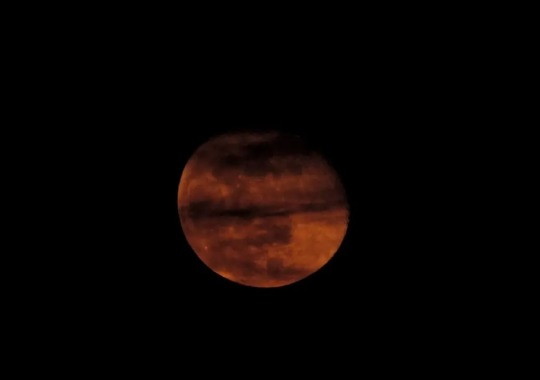
Intrigued, Li homed in on these polar spectra. While the Moon's surface is littered with iron-rich rocks, he nevertheless was surprised to find a close match with the spectral signature of hematite. The mineral is a form of iron oxide, or rust, produced when iron is exposed to oxygen and water. But the Moon isn't supposed to have oxygen or liquid water, so how can it be rusting?
The mystery starts with the solar wind, a stream of charged particles that flows out from the Sun, bombarding Earth and the Moon with hydrogen.

Hydrogen makes it harder for hematite to form. It's what is known as a reducer, meaning it adds electrons to the materials it interacts with. That's the opposite of what is needed to make hematite: For iron to rust, it requires an oxidizer, which removes electrons. And while the Earth has a magnetic field shielding it from this hydrogen, the Moon does not.
"It's very puzzling," Li said. "The Moon is a terrible environment for hematite to form in." So he turned to JPL scientists Abigail Fraeman and Vivian Sun to help poke at M3's data and confirm his discovery of hematite.
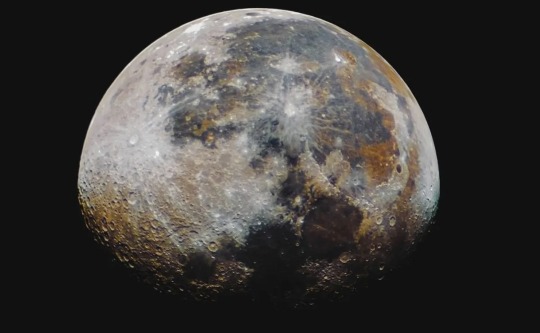
"At first, I totally didn't believe it. It shouldn't exist based on the conditions present on the Moon," Fraeman said. "But since we discovered water on the Moon, people have been speculating that there could be a greater variety of minerals than we realize if that water had reacted with rocks."
After taking a close look, Fraeman and Sun became convinced M3's data does indeed indicate the presence of hematite at the lunar poles. "In the end, the spectra were convincingly hematite-bearing, and there needed to be an explanation for why it's on the Moon," Sun said.
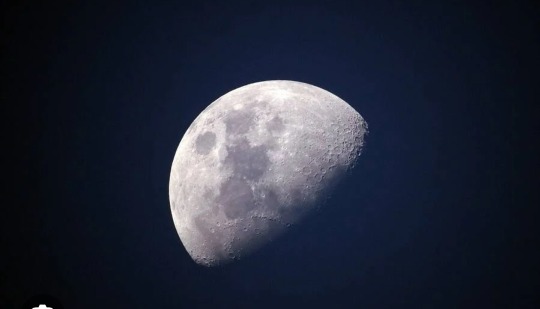
Their paper offers a three-pronged model to explain how rust might form in such an environment. For starters, while the Moon lacks an atmosphere, it is in fact home to trace amounts of oxygen. The source of that oxygen: our planet.
Earth's magnetic field trails behind the planet like a windsock. In 2007, Japan's Kaguya orbiter discovered that oxygen from Earth's upper atmosphere can hitch a ride on this trailing magnetotail, as it's officially known, traveling the 239,000 miles (385,00 kilometers) to the Moon.
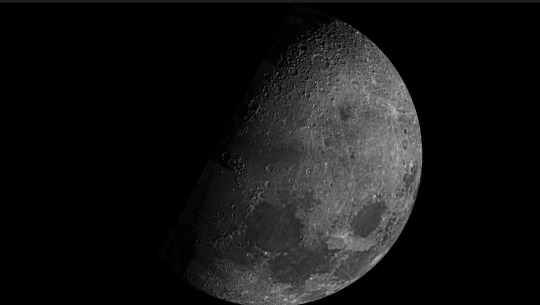
That discovery fits with data from M3, which found more hematite on the Moon's Earth-facing near side than on its far side. "This suggested that Earth's oxygen could be driving the formation of hematite," Li said. The Moon has been inching away from Earth for billions of years, so it's also possible that more oxygen hopped across this rift when the two were closer in the ancient past.
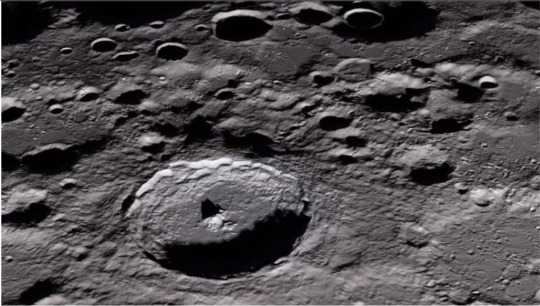
Then there's the matter of all that hydrogen being delivered by the solar wind. As a reducer, hydrogen should prevent oxidation from occurring.
But Earth's magnetotail has a mediating effect. Besides ferrying oxygen to the Moon from our home planet, it also blocks over 99% of the solar wind during certain periods of the Moon's orbit (specifically, whenever it's in the full Moon phase). That opens occasional windows during the lunar cycle when rust can form.
Originally published on NASA.gov
COMING UP!!
(Saturday, July 1st, 2023)
"WHAT IS TIME DISTORTION??"
#atmosphere#astronomy#outer space#alternate universe#astrophysics#universe#spacecraft#white universe#space#parallel universe#astrophotography#moon#rusty moon
206 notes
·
View notes
Text
India launched its first space mission to study the sun on Saturday, less than two weeks after a successful uncrewed landing near the south polar region of the moon.
The Aditya-L1 spacecraft took off on board a satellite launch vehicle from the Sriharikota space center in southern India on a quest to study the sun from a point about 1.5 million kilometers (930,000 miles) from earth, known as L-1.
The spacecraft is equipped with seven payloads to study the sun's corona, chromosphere, photosphere and solar wind, the Indian Space Research Organization said.
After over an hour, the ISRO said the launch was "accomplished successfully."
Continue Reading.
127 notes
·
View notes
Photo

2023 July 19
Chandrayaan-3 Launches to the Moon
Image Credit & Copyright: Sruthi Suresh (Space Group)
Explanation: Birds don't fly this high. Airplanes don't go this fast. The Statue of Liberty weighs less. No species other than human can even comprehend what is going on, nor could any human just a millennium ago. The launch of a rocket bound for space is an event that inspires awe and challenges description. Pictured here last week, the Indian Space Research Organization's LVM3 rocket blasted off from the Satish Dhawan Space Centre on Sriharikota Island, India. From a standing start, the 600,000+ kilogram rocket ship lifted the massive Chandrayaan-3 off the Earth. The Chandrayaan-3 mission is scheduled to reach the Moon in late August and land a robotic rover near the lunar South Pole. Rockets bound for space are now launched from somewhere on Earth every few days.
∞ Source: apod.nasa.gov/apod/ap230719.html
92 notes
·
View notes
Text

Scientists create tunable shells to encapsulate tiny droplets
Scientists at the Indian Institute of Science (IISc) have developed a novel technique to encapsulate liquid droplets used for various applications, including single crystal growth and cell culture.
The technique exploits the capillary effect—the rise of a liquid through a narrow space—to coat droplets in a composite shell containing oil-loving and hydrophobic particles. It offers the ability to tune the shell thickness over a wide range, allowing the encapsulation of droplets of different sizes. The study was published in Nature Communications.
Droplets are important in a variety of fields. "In microreactors, droplets can be used to create different reaction environments or mix different chemicals. In drug delivery systems, droplets can be used to deliver drugs or other agents to specific tissues or organs. In crystallization studies, droplets can be used to control the growth of crystals. And in cell culture platforms, droplets can be used to grow cells in a controlled environment, which can help to improve cell viability and proliferation," explains lead researcher Rutvik Lathia, Ph.D. student at the Center for Nano Science and Engineering (CeNSE), IISc.
Read more.
14 notes
·
View notes
Text
இந்திய விண்வெளி ஆராய்ச்சி மையத்தில் பணியிடங்கள் வெளியாகியுள்ளன..!
இந்திய விண்வெளி ஆராய்ச்சி மையத்தில் பணியிடங்கள் வெளியாகியுள்ளன..!
#govtjobs #upsc #ssc #currentaffairs #gk #ssccgl #ias #jobs #governmentjobs
இந்திய விண்வெளி ஆராய்ச்சி நிறுவனத்தின் பின் வரும் பணிகள் நிரப்புவதற்கான அறிவிப்பு வெளியாகியுள்ளன. மத்திய அரசு இந்த அதிகாரப்பூர்வ அறிவிப்பினை வெளியிட்டுள்ளது. இந்திய விண்வெளி ஆராய்ச்சி நிறுவனத்தின் பணிக்கு விண்ணப்பிக்க ஆர்வமுள்ளவர்கள் 29/11/2022 முதல் 19/12/2022க்குல் என்ற இனையத்தில் மூலமாக ஆன்லைன் மூலமாக விண்ணப்பிக்கவும். இப்பணிக்கு விண்ணப்பிக்கும் நபர்கள் விண்ணப்பிக்கும் முன்பு கீழ்க்கண்ட…

View On WordPress
#amazing facts about indian space research organisation#india space research organisation#india space research organization#indian space agency#indian space research#indian space research organisation#indian space research organisation (isro)#indian space research organisation news#indian space research organisation news today#indian space research organization#ISRO ICRB Recruitment 2022 Apply 68 Scientist Posts
0 notes
Text
Worm Bin Tutorial

Disclaimer: the information I’m giving is based on my own personal experience and research. Some of the things that work for me may not work in a different setup. If you’re interested in learning more, I’d highly recommend the book “Worms Eat My Garbage” by Mary Appelhof.
Why have a worm bin?
It’s a great way to dispose of organic matter while minimizing methane emissions! Landfills aren’t set up for aerobic decomposition, so food scraps in landfills often give off a ton of methane emissions when decomposing, which is a pretty potent greenhouse gas! Also, worm castings are an excellent fertilizer/mulch/soil amendment.
A worm bin is super low-maintenance once you figure out what you are doing. It doesn’t smell bad and can be kept indoors—I keep mine by my desk in the winter! And I think it’s pretty fun. Also, your trash won’t smell as bad when it isn’t full of rotting food!
Making the Worm Bin
Really what you need here are two containers. One of them you put a bunch of holes in, and that sits inside the other container. The holes are important because they allow for drainage of water (which is then caught by the external container) and diffusion of oxygen. I used some kitty litter buckets for this, and they work great! The lid is really useful.

Pro-tip: you don’t need a drill to make the holes. If you have a knife or razor blade, you can press it into the plastic and rotate it, which makes nice, round holes.
The bin with holes in it sits inside the other bin, but there should be space for water drainage/collection and air permeation.
Worms
The worms you want in general are “red wrigglers” or Eisenia fetida. These are sometimes sold as bait worms, but in my experience the “red worms” are actually European Nightcrawlers (labeled “ENC”). Those can also work, but they prefer different conditions from red wigglers (I believe they live deeper in the soil) so they might not be as successful. You also need a lot of worms to start out with, like a pound of worms. I had the best success going to a local vermiculture business and getting a pound of mixed worms (red wigglers, European night crawlers, and Indian blues). I think the mix is useful since having a couple different species makes the bin more resilient.
Note: buying local is really beneficial here. When worms are sold online and shipped, the sellers “dehydrate” them a bit to help lower weight and prevent overheating. The worms will be perfectly healthy after you give them moist bedding again, but you’re going to miss out on bacteria and other beneficial critters that could come with the worms if they are fresh.
Setting up the Bin
An important thing I have learned from experience: you can’t just put food and worms in a bin and expect things to work. You also need bedding. Bedding is filler material, like newspaper or coconut coir. I mostly use newspaper I buy from a local vermiculture business. I tried ripping my own paper and once it got wet it turned into a solid layer, whereas the pre-ripped newspaper I buy has a fluffy consistency.
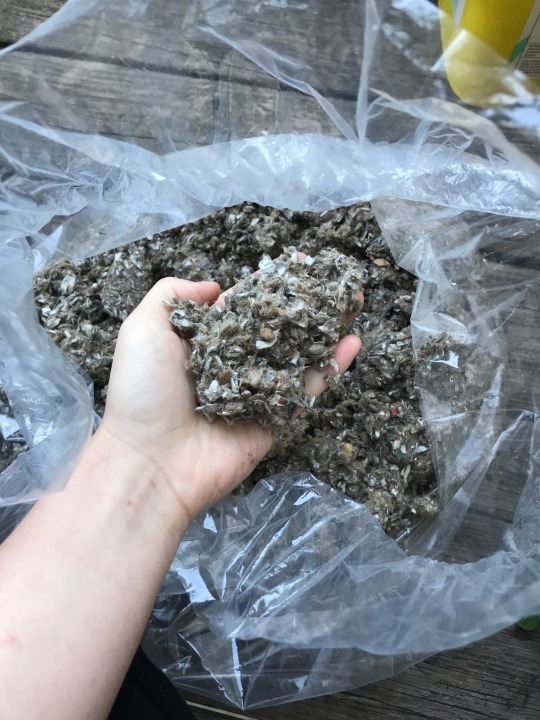
I’ve also tried using peat moss as bedding, but that didn’t work so well—I got a huge spike in the more population (maybe from acidic conditions?). Peat moss also isn’t great for the environment in general.
The bedding is important because worms shouldn’t eat too much food or too much of their own poop (castings) as both are bad for them. Bedding should be topped off when possible. When you add food to the bin, use a shovel to bury it in the bedding. This helps things rot properly, prevents mold and bad smells, and keeps away critters like fruit flies.
Other Critters
Your worm bin can and should have other critters in it! Some in my bin include mites and springtails, who both help the worms break down organic matter. However, there should be a balance between other critters and the worms. If something appears to be taking over, you might have a problem. I’ve also had fruit flies in my bin—this didn’t end up being a huge problem as long as I only opened the lid of the bin outdoors.
Worm Bin Maintenance
Once you get going, the worm bin doesn’t require much maintenance. I keep a freezer bag in my freezer and fill it up with food scraps, and once it seems the worms are mostly finished with the last feeding, I’ll thaw the bag and feed them again. (Freezing is helpful because it’s a convenient way to preserve the scraps, but it also helps to kickstart breaking down, since freezing damages things.) Be careful not to over-feed the worms, as this can lead to a sour bin and/or string-of-pearls (which is a pretty disturbing worm ailment).
Also be careful of what you feed the worms. You can look up lists of dos and donts online, but in general, stick to plant matter, and don’t feed them aromatic herbs or citrus. Also make sure to feed the worms plenty of crushed eggshells, as this provides grit and halos to regulate the pH of the worm bin.
The worms should be kept in a location with temperatures that are comfortable to humans. They don’t do well if conditions are too cold or too warm.
Make sure to dump out any water that accumulates and add bedding when it’s needed. I use this to water plants, and I haven’t had any negative effects, but some people will say you shouldn’t do that.
Once the bin starts to get full, you can remove worm castings. There are fancy ways to do this, but I just dig through the bin and scoop out any areas that are nearly all worm castings and then remove any worms/eggs that are in the castings by hand. The castings can be mixed in with potting soil or used on top like a mulch. (Although be careful: Ive heard worms are an invasive species in some areas so check before you potentially introduce them to the ground.)
Conclusions
So that’s it! If you want more information, I encourage you to do your own research. Although try to seek out multiple sources—not all the information out on the internet (or even in books) has been properly vetted. I can also try my best to answer questions based on my own experience, but I’m still relatively new at this.
47 notes
·
View notes
Text
Only days after a simular Russian mission failed crashing into the lunar surface, India became only the 4th country in history to land on the moon and the first to land on the South Pole. On August 23, 2023, the ISRO (Indian Space Research Organization) landed the Chandrayaan 3 (Chandrayaan is translated from moon vehichle in Hindi Sanskrit) on the moon to perform experiments on the little known and rough terrained area. (Space Exploration, Real Life Event)

#nerds yearbook#real life event#the moon#august#2023#lunar#space exploration#india#the south pole#isro#chandrayaan3
21 notes
·
View notes
Text
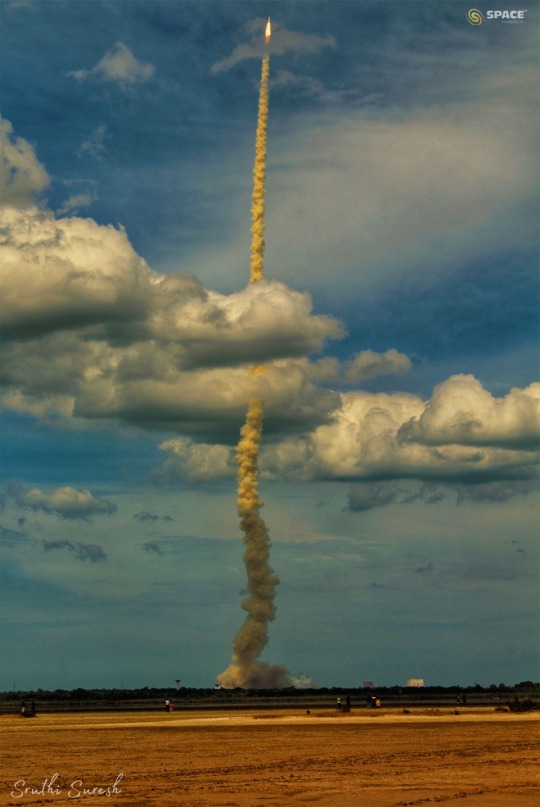
APOD: Chandrayaan-3 Launches to the Moon (7/19/23)
Birds don't fly this high. Airplanes don't go this fast. The Statue of Liberty weighs less. No species other than human can even comprehend what is going on, nor could any human just a millennium ago. The launch of a rocket bound for space is an event that inspires awe and challenges description. Pictured here last week, the Indian Space Research Organization's LVM3 rocket blasted off from the Satish Dhawan Space Centre on Sriharikota Island, India. From a standing start, the 600,000+ kilogram rocket ship lifted the massive Chandrayaan-3 off the Earth. The Chandrayaan-3 mission is scheduled to reach the Moon in late August and land a robotic rover near the lunar South Pole. Rockets bound for space are now launched from somewhere on Earth every few days.
©
Sruthi Suresh
(Space Group)
20 notes
·
View notes